The black footed polypore is a common species found on decaying trees across North America. It has a distinctive black stem, which gives it the common name and also makes it pretty easy to identify. The black-footed polypore isn’t edible or known for its medicinal properties, but it is still a fun find, especially in winter when it might be one of the few species encountered in the chilly barren woods.
- Scientific Name: Polyporus badius, Royoporus badius, Picipes badius, Polyporus pipes
- Common Name: Black-footed polypore, black-leg polypore
- Habitat: Decaying hardwoods
- Edibility: Inedible
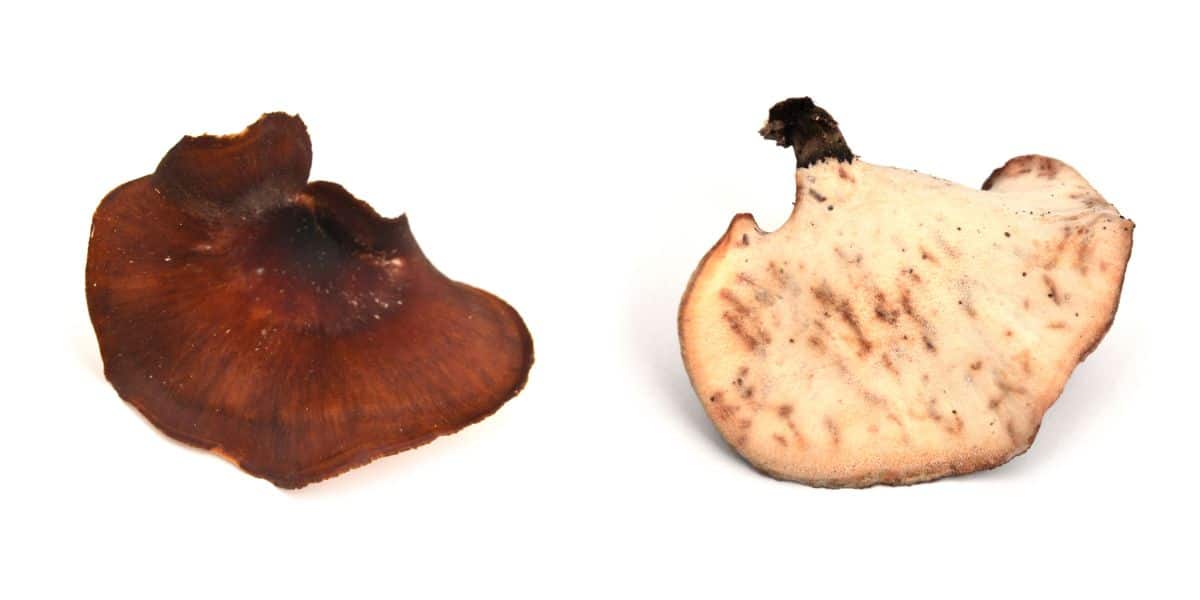
Jump to:
All About The Black Footed Polypore
The common names “black-footed polypore” and “black-leg” stem from the mushroom’s characteristic dark-colored stalk, which visually sets it apart from many other polypores.
It was first described in the early 19th century by Christian Hendrik Persoon, a renowned mycologist. Over the years, the mushroom’s taxonomy underwent several changes, transferred from the Boletus genus to Polyporus and then to Royoporus in 1997. Current studies put Picipes badius as the correct scientific name, but there is still debate around it.
Polyporus badius is currently the most recognized name, but recent studies suggest that further rearrangements may be necessary in the future to reflect the species’ phylogenetic relations more accurately.
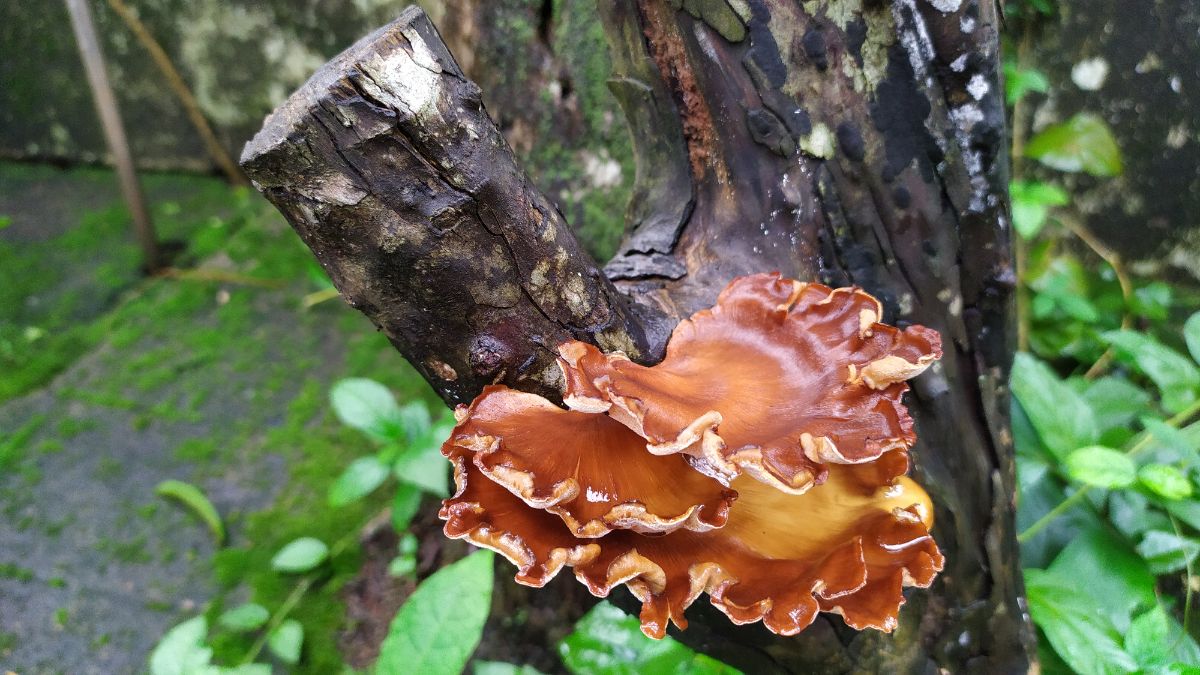
Black-Footed Polypore Identification Guide
Season
The prime season for the black footed polypore is from August to October, but it can also overwinter in some areas. It prefers and is more common in the cooler temperatures of spring and fall.
Habitat
The black footed polypore is a saprobic species, which means it eats the decaying wood it grows on. It can be found on fallen tree trunks, decaying branches, and stumps of various hardwoods. It is most common on hardwoods but also grows on conifer species. Some of its preferred hosts include Acer, Aesculus, Alnus, Betula, Fagus, Fraxinus, Populus, Prunus, Quercus, Salix, Tilia, and Ulmus. It is usually found after the bark has begun to decay or has entirely disappeared, and it causes a white rot.
This mushroom typically grows alone or in small groups. In fact, sometimes, several specimens share the same stem. It only grows upright from decaying wood; it never grows from the ground. Black-footed polypores are common in temperate regions across Europe, Asia, Oceania, and North and South America.
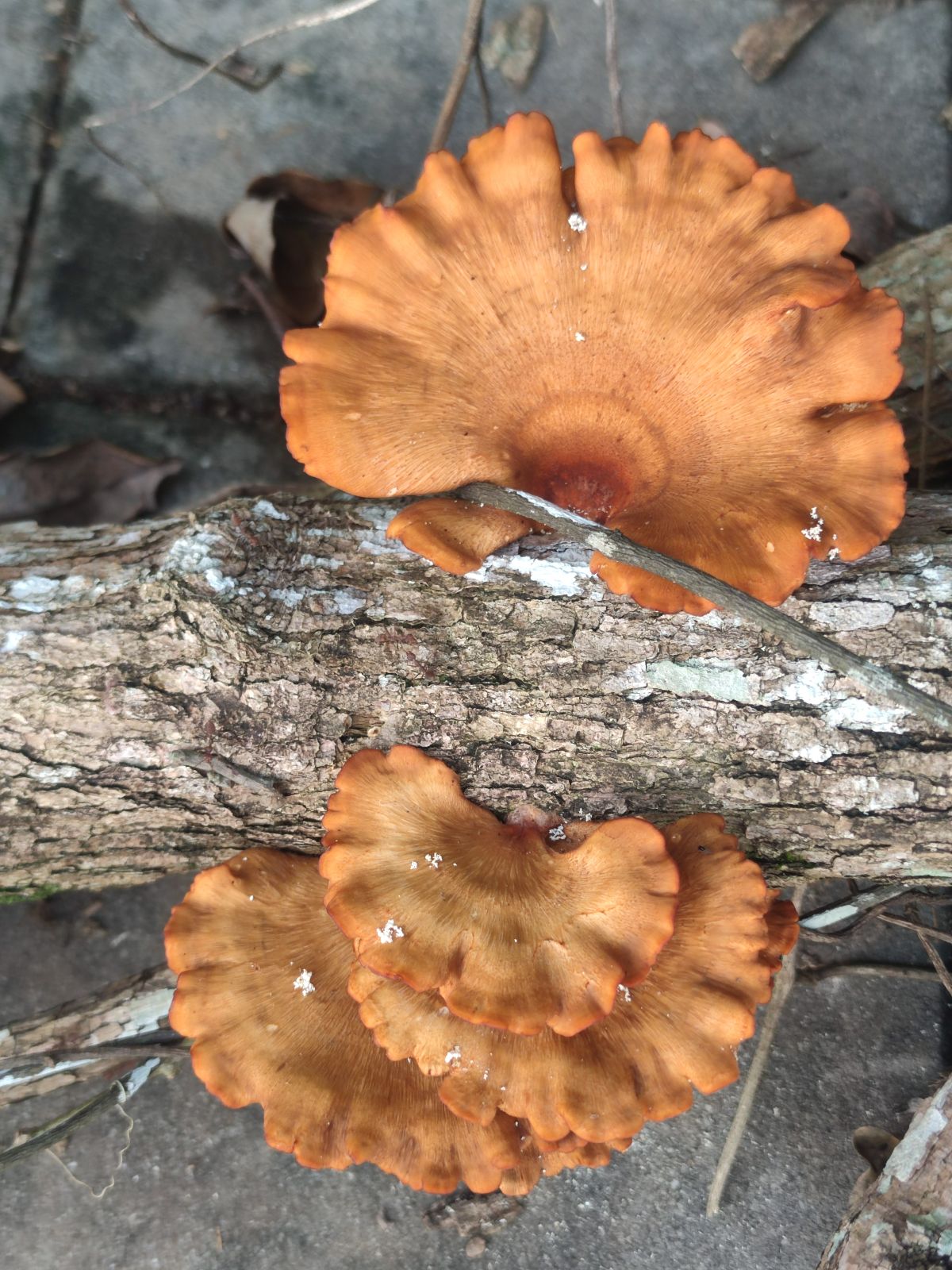
Identification
Cap
The cap of the black footed polypore is smooth, wavy, and typically brown in color. The brown coloring might be light tan or dark brown to dark reddish brown. And it is often darker in the center with lighter-colored edges. With age, the cap blackens from the center outwards.
The shape of the cap can vary, ranging from circular to kidney-shaped, often with lobes or a wavy edge. As the mushroom ages, the cap develops radial wrinkles. The size of the cap can reach up to 8-9 inches in width. Often, the cap is depressed in the center to give it a slightly funnel-like appearance.
As you can see from the pictures in this guide, there is a lot of variance with the cap appearance, coloring, and growth. A lot depends on what type of wood it is growing on and the nutrients available. Despite the dissimilarities, there is always the black “foot” at the base of the stem that gives this species away.
Pores
The pore surface of the black-footed polypore runs down the stem. It is initially white, becoming dingy whitish to brownish as the mushroom ages. The pore surface does not bruise when damaged.
Stem
The stem of the black footed polypore is often off-center or laterally attached to the cap. The stem can measure anywhere from ½ to 2½ inches in length and ⅛ to ⅝ inch in width. It is dark brown to blackish-brown in color with a smooth and velvety texture. As the mushroom ages, the stem may become black and longitudinally wrinkled.
Flesh
The flesh of the black-footed polypore is white, thin, and very tough. It does not change color when sliced.
Odor and Taste
The black footed polypore does not possess a distinctive odor. Its taste is slightly mealy or not distinctive.
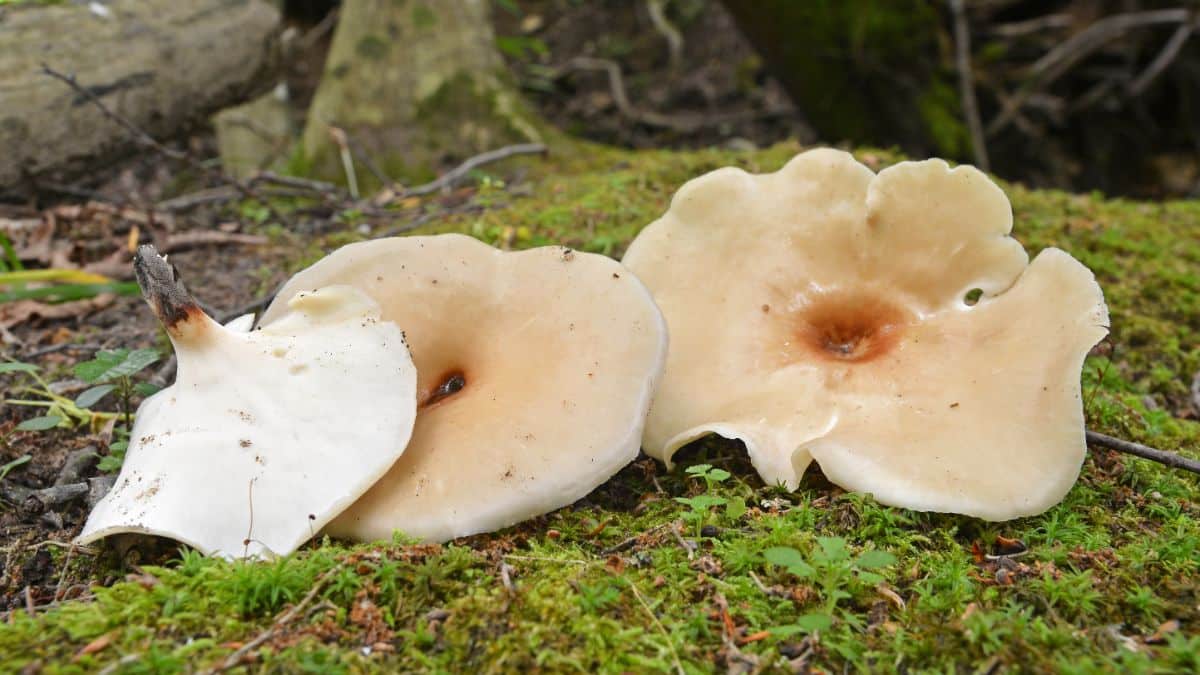

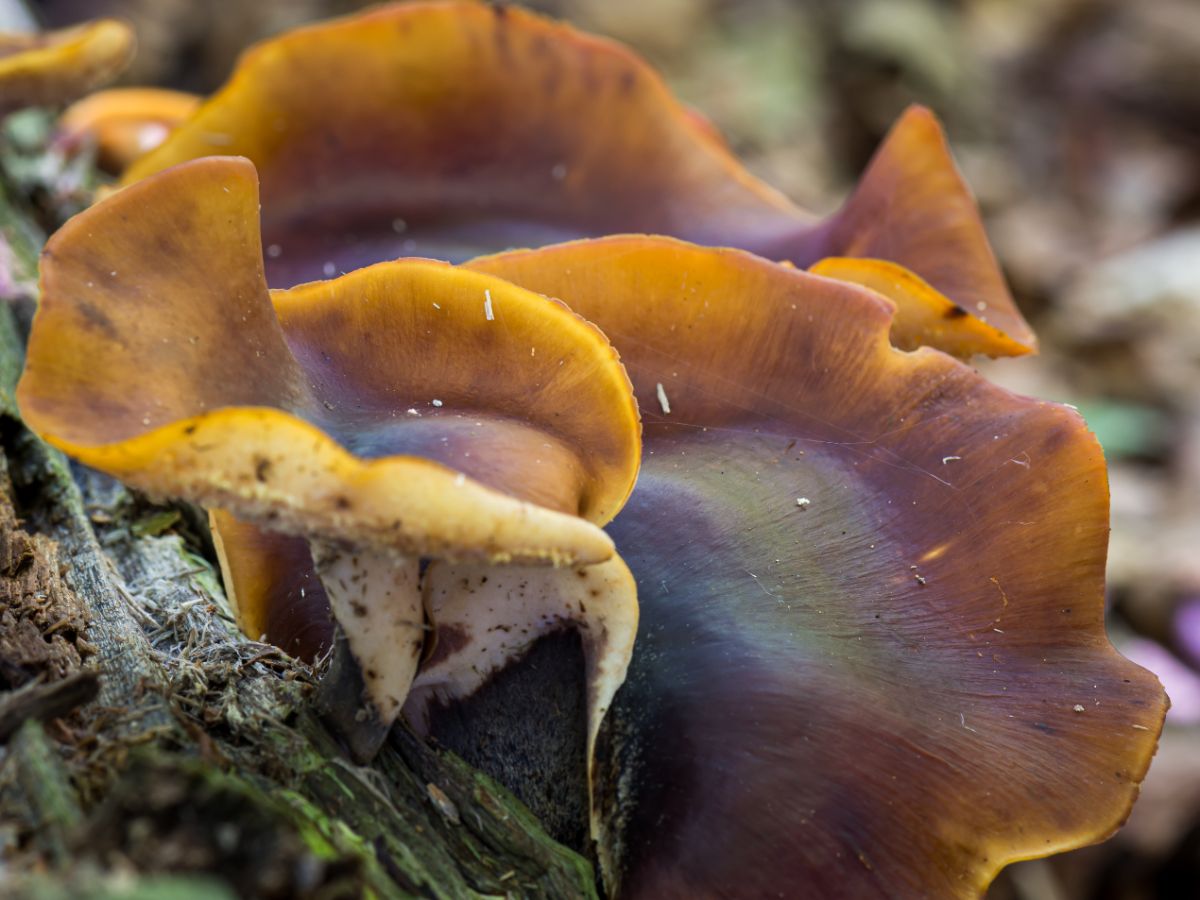
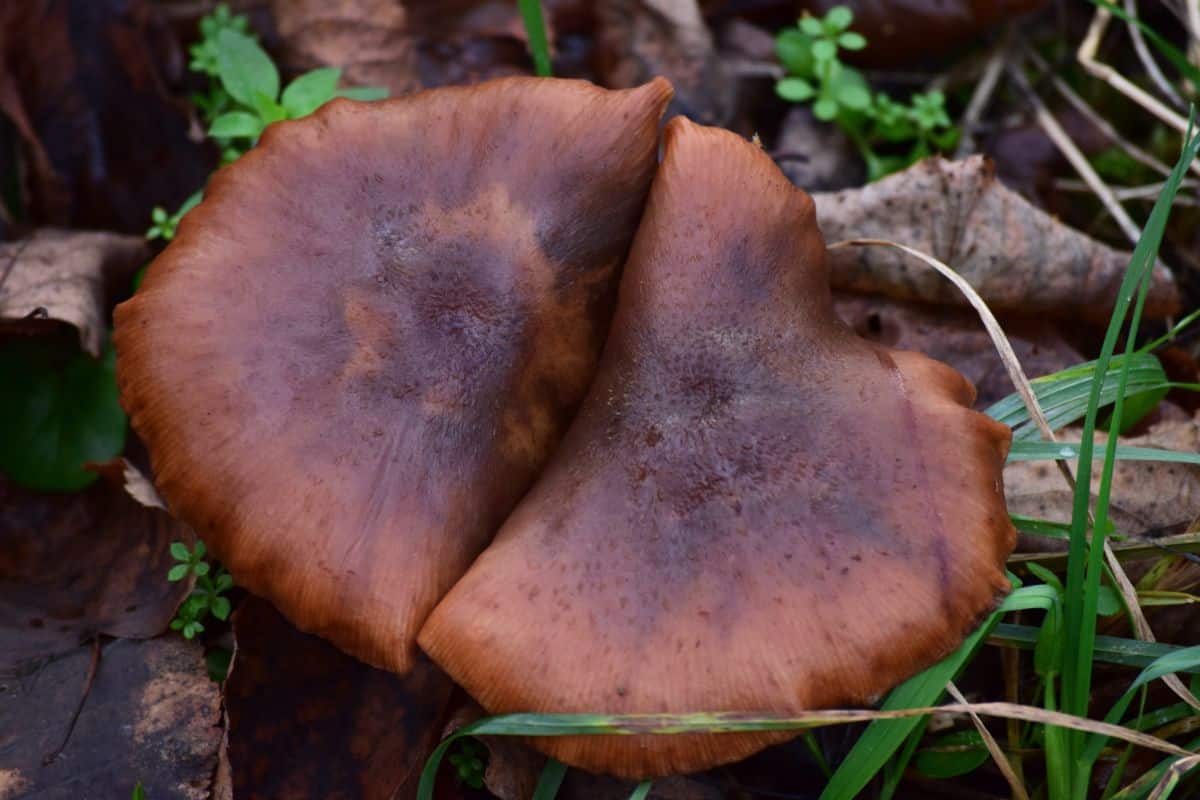
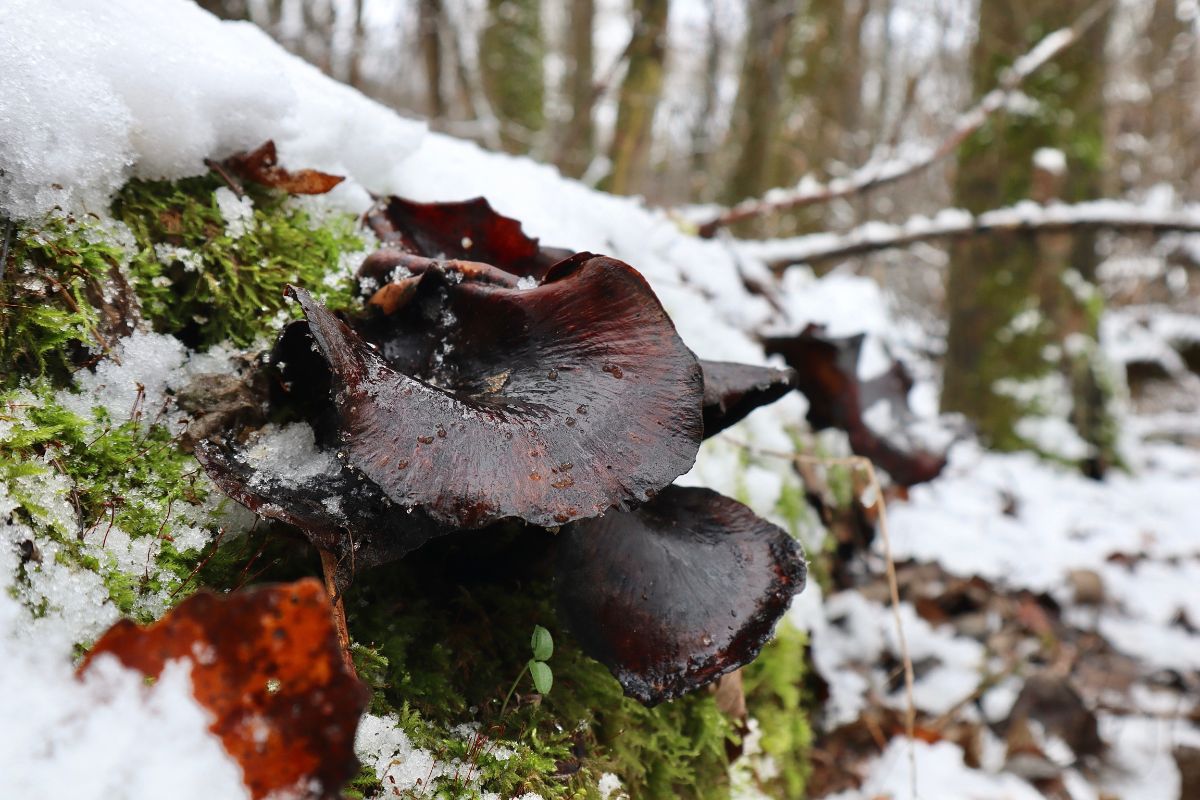
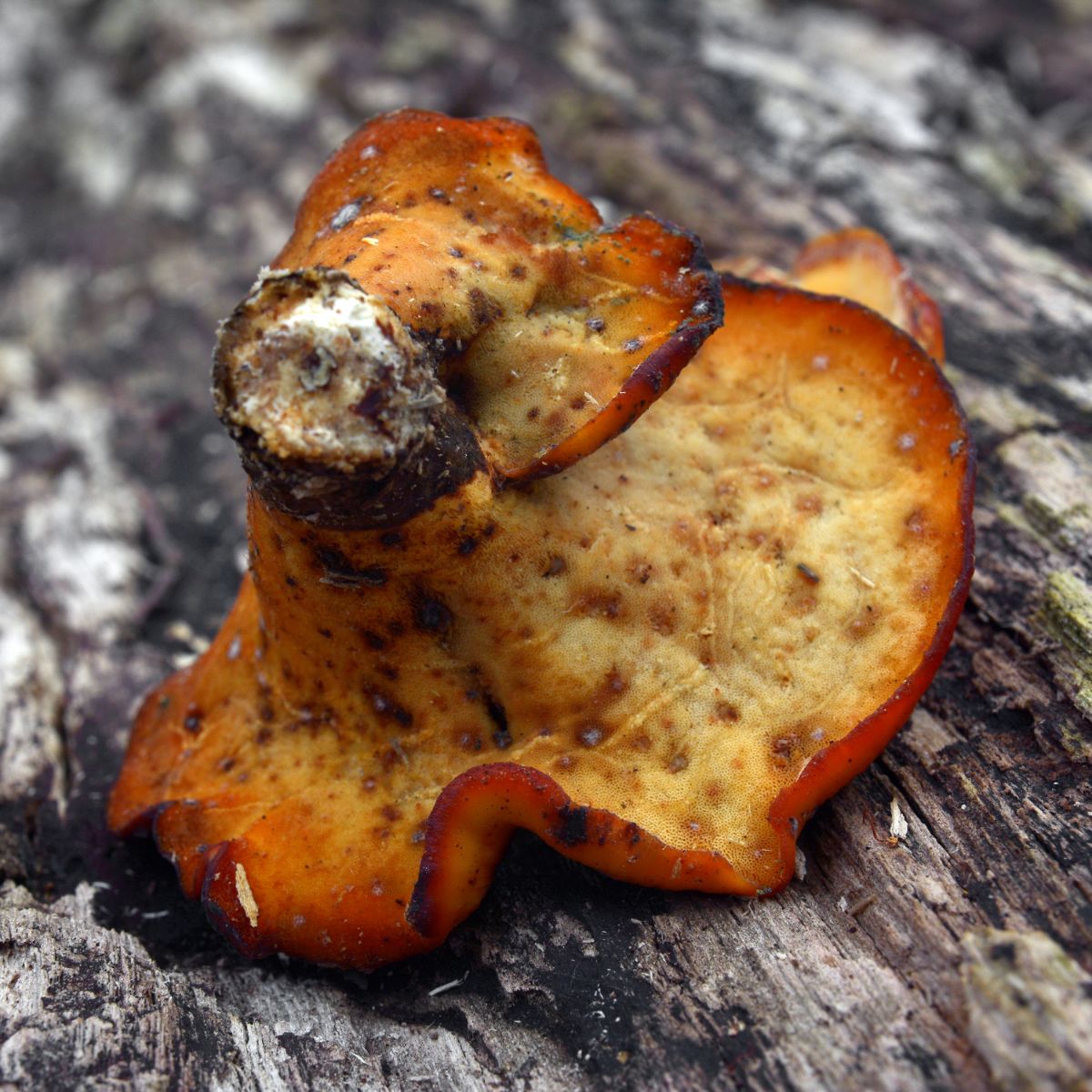
Black Footed Polypore Lookalikes
Rooting Polypore (Polyporus radicatus)
This species appears to grow from the ground, although it is actually growing from buried wood. Its stalk continues underground with a thick, rootlike filament. This extended stem distinguishes it from the black footed polypore, which has an off-center or lateral stalk that is not nearly as long. The stem of the rooting polypore is also quite robust, much thicker and substantial than the black-footed polypore.
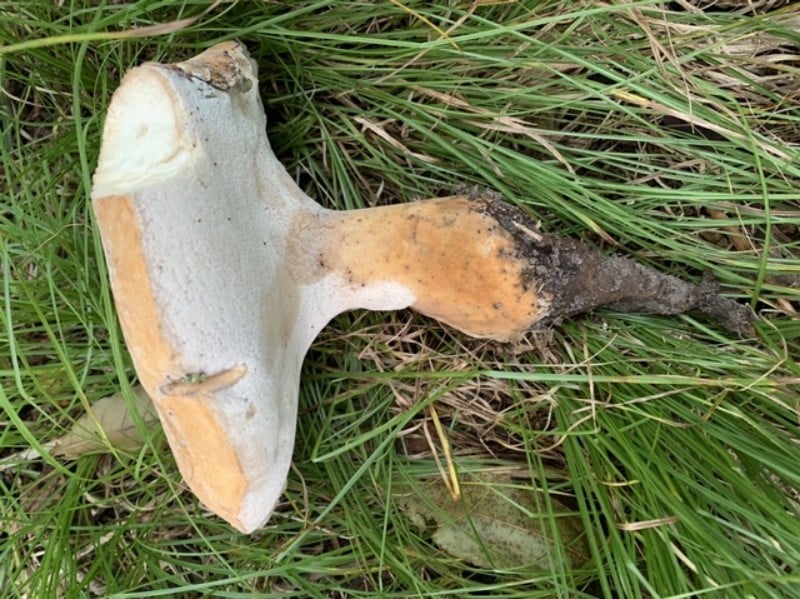
Cerioporus varius/Polyporus varius
This mushroom is very similar looking but is smaller than the black-footed polypore. It also has a pale brown to tan or yellowish cap and appears on smaller hardwood branches and sticks. At first glance, it is easily confused. But, then when you take into account the size and generally lighter coloring, it’s pretty clear which one you’ve found.
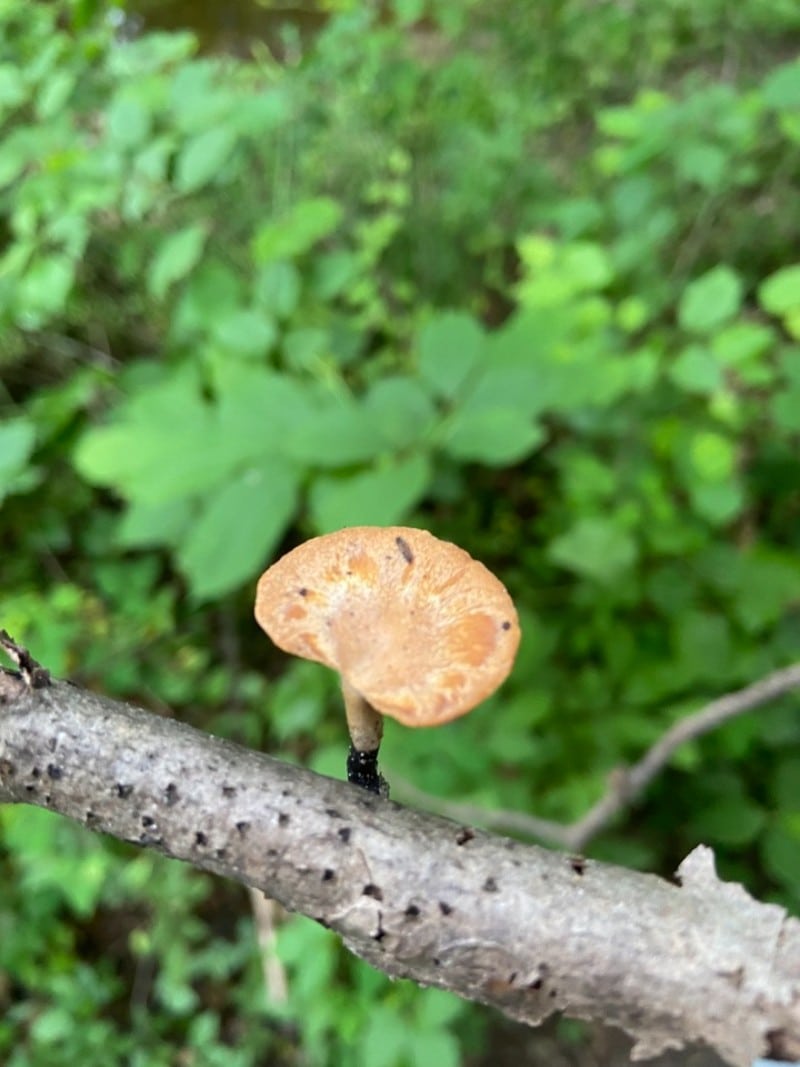
False Turkey Tail (Stereum ostrea)
This mushroom has a color palette similar to the black-footed polypore, with brown hues. However, the false turkey tail lacks the black footed polypore’s distinctive black or dark brown stem. And, it more zonal coloring is quite different than the black footed polypore, as well.
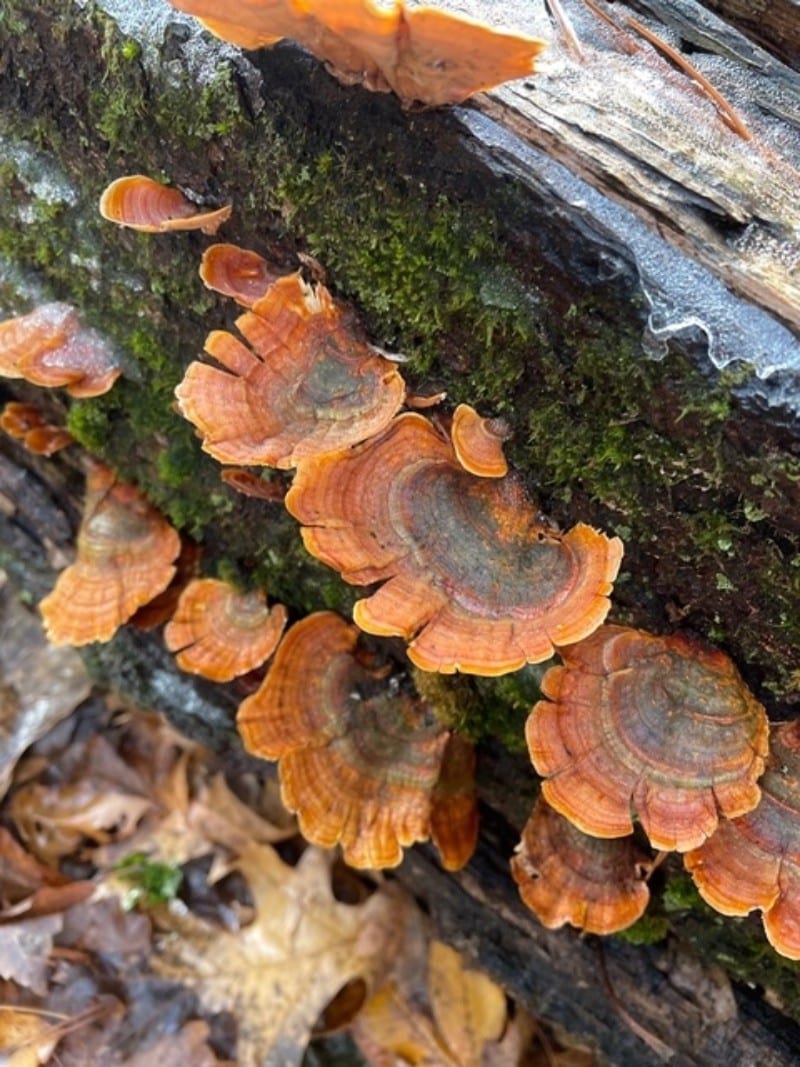
Black-Footed Polypore Edibility
The black-footed polypore is not toxic but is inedible due to its tough, leathery texture.
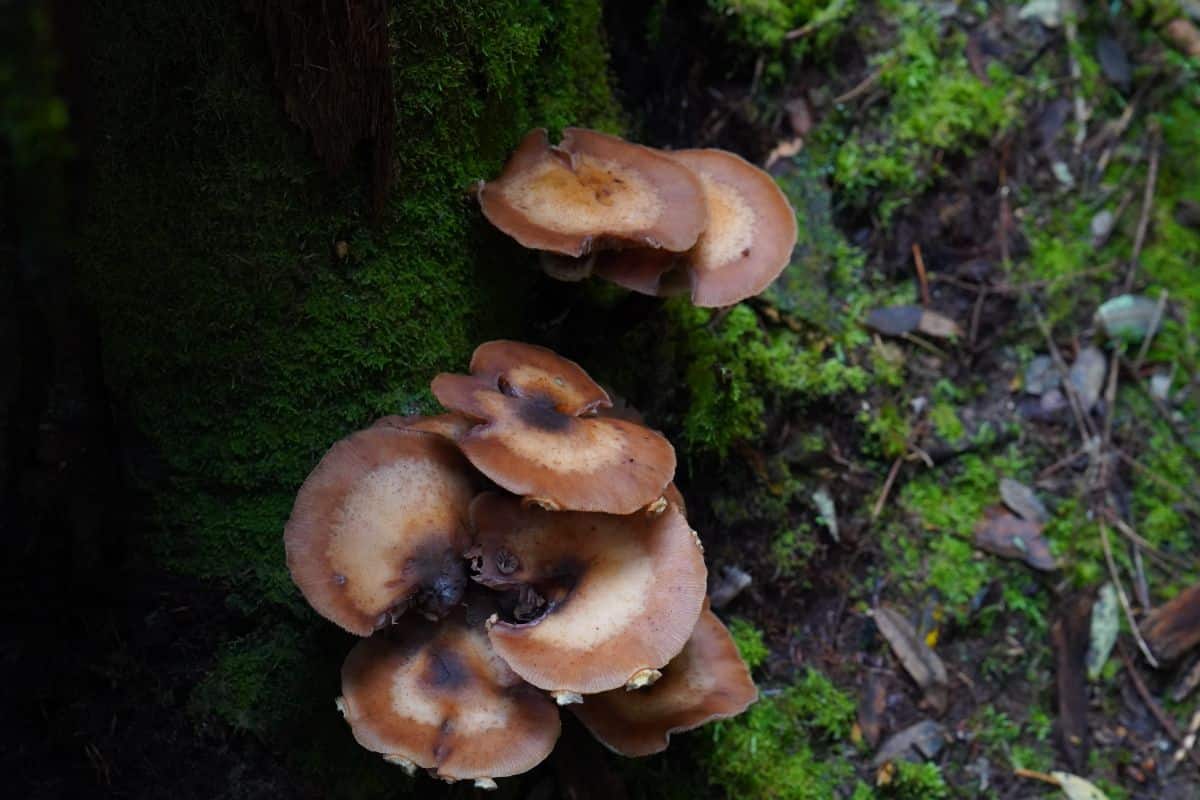
Curious about other polypore species? Some are prime edibles! Check out our Introduction to Polypores to learn more.
Common Questions About The Black Footed Polypore
Is the black-footed polypore edible?
It is extremely tough and inedible.
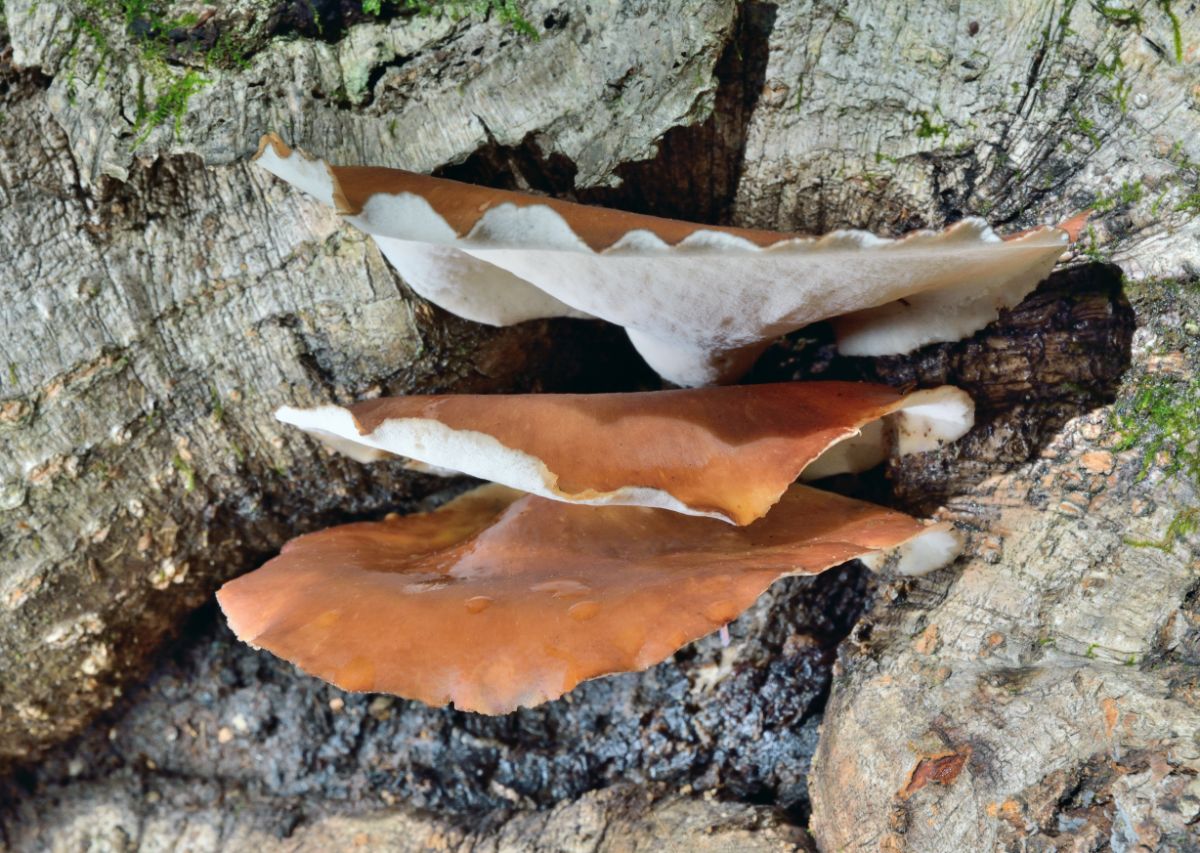


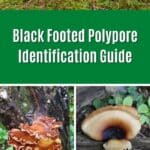
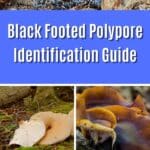
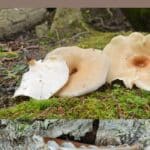




Leave a Reply